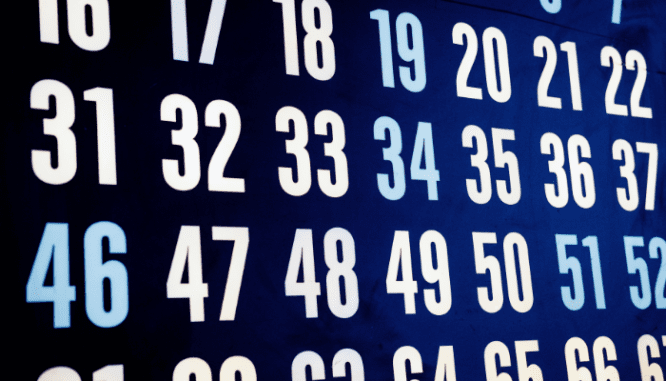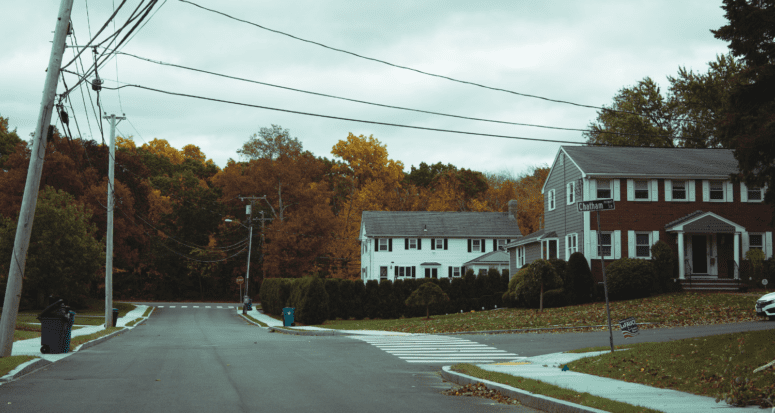I’m Ready to Buy: What’s the Average Down Payment on a House?
- Published on
- 3-4 min read
-
 Blair Kaplan Contributing AuthorClose
Blair Kaplan Contributing AuthorClose Blair Kaplan Contributing Author
Blair Kaplan Contributing AuthorBlair has worked with everyone from small business owners to major universities to find their voice and tell their story — their way. When she's not busy surfing Pinterest for her dream home (complete with massive walk-in closet), she's busy utilizing her law degree to write for attorneys and real estate professionals.
You’ve finally got that promotion at work, and you think it’s time to seriously start thinking about buying a house. But when you start doing your research, you worry that actually, you might not be ready at all. What’s this about needing 20% of the home price as a down payment? That’s tens of thousands of dollars in most markets, and hundreds of thousands in others!
For years, many people looking to buy a home have been under the impression that doing so required a 20% down payment. For most people, saving up a 20% down payment on a house seems daunting at best, and downright impossible at worst.
In Q4 2019, the median home price was $324,500, and that’s more than $60,000 you’d need to save up for a 20% down payment! Is 20% really the average down payment on a house — and if not, what is it? Let’s break down all of the evidence.

What’s the difference between average and median?
Before we explain how to think about your down payment, it’s important that you understand the difference between an average and a median. Here’s a refresher for those of you who haven’t taken a math class in a few years.
An average is a number that’s representative of a set of numbers. You get the average by adding up a set of numbers, and then dividing that by how many numbers are in the set. Here’s an example:
- Five students are graded on an exam. Their grades are 83, 78, 87, 98, and 92. To get the average (mean) of the numbers, we add the numbers together (438), and then divide that result by the total number of grades (5).
- 438/5 = 87.6 (the average grade)
A median is the middle number in a sorted list of numbers.
- In the above example, to find the median of the five grades, we must first put the numbers in order (78, 83, 87, 92, 98). In this case, the middle number is 87. Therefore, the median is 87.
What happens to a median if there are two middle numbers? Let’s add a grade of 100 to the mix. Start by putting the numbers in order again (78, 83, 87, 92, 98, 100).
In this case, there are two middle numbers (87 and 92), and we need to find the average of those two numbers to calculate the median.
- 87 + 92 = 179
- 179/2 = 89.5
So in this example, the median is 89.5 — the average between 87 and 92.
What are other buyers putting down?
When you are getting ready to make a down payment on a house, you may not know how much to put down — or what other buyers are putting down, for that matter.
Here is a list of average and median down payments from credible loan origination data sources.
National Association of Realtors Profile of Home Buyers and Sellers: 2019
To create this survey, NAR contracted with Experian to get names of people who bought homes between July 2018 and June 2019; this is one of NAR’s flagship surveys.
Findings:
- The overall average down payment was 12%.
- First-time buyers put down an average of 6% and financed 94% of their home purchase.
- Repeat buyers put down an average of 16% and financed 84% of their home purchase.
- In 2018, the median down payment was 13% for all buyers.
- In 2018, the median down payment was 7% for first-time buyers.
FHFA National Survey of Mortgage Originations
This is a quarterly survey of new mortgages that’s jointly conducted by the Federal Housing Finance Agency (FHFA) and the Consumer Financial Protection Bureau (CFPB). The survey looks at loan-to-value (LTV) ratios.
LTVs are a commonly used ratio in mortgage lending to determine the amount of money necessary for a down-payment and whether a lender will provide a borrower with credit. Generally speaking, lenders tend to extend the lowest interest rates to mortgage applicants with LTVs of 80% or less.
Upon conducting the survey, a random sample of about 6,000 mortgages per quarter is drawn from new loans. As of June 2019:
- FHA loan average LTV was 84 — that’s a 16% down payment
- Conventional loan average LTV was 79 — that’s a 21% down payment
Ellie Mae Origination Insights Report
Ellie Mae takes a sample of closed loan applications that “flow through Ellie Mae Digital Lending Platform and Ellie Mae Network” — it looks at the loan-to-value (LTV) ratio of the Federal Housing Administration (FHA), Veterans Affairs (VA), and conventional loans. As of January 2020:
- FHA loan average LTV was 95 — that’s a 5% down payment
- Conventional loan average LTV was 80 — that’s a 20% down payment
- VA loan average LTV was 98 — that’s a 2% down payment
Lodestar Software Solutions
Lodestar Software Solutions offered HousingWire some data; it collected loan cost estimates and analyzed the data in 2019.
- The median down payment amount in the U.S. was 5.37% (2018)
- 68% of buyers had a down payment less than 20%
- The median down payment was 6.06% (2017)

What does it all mean?
As we can see from the above sources, when buyers take out a mortgage in order to purchase a home, even though conventional wisdom recommends that they put down 20%, most buyers don’t follow that advice.
“If they want to buy a house, they can buy a house,” says Bob Montuori, a top California real estate agent.
He says it’s all about financing. “There [are] a lot of programs out there. You could do it for 5% down,” he says.
When it comes to finding the best deals, Montuori explains that it’s all about connection.
“I think it starts with finding the best lender, so talk to a bunch of experienced, high-volume agents, and have them refer a couple of lenders. Get a lender that you feel comfortable with.”
According to the 2018 report from the National Association of Realtors (NAR), out of the buyers who took out mortgages, most first-time buyers generally put down 7%, whereas repeat buyers typically put down 16%. However, some lenders allow you to put down as little as 3%.
One of the reasons why mortgage and financial professionals consistently recommend putting 20% down is because if you put down less than 20%, you will likely have to pay mortgage insurance on your loan. If you put 20% or more down, you won’t have to pay for mortgage insurance, which could end up saving you a lot of money in the long run.
Even though 20% isn’t actually “standard,” it might be a good idea to put 20% down if you can afford to. However, if you don’t have that much money to put down, there are other resources and options. “…There’s programs to give you assistance and in fact, you can have almost no money,” Montuori shares.
The bottom line is if you put down at least 20% of the total value of the house, you’ll have better loan options with lower interest rates. But if you don’t have 20% to put down, you can still qualify for a home. Just factor mortgage insurance into your budget.
With plenty of options for submitting a low down payment, tons of financial resources, and various other assistance, you might just be able to afford the American Dream after all!
Header Image Source: (Eilis Garvey / Unsplash)
